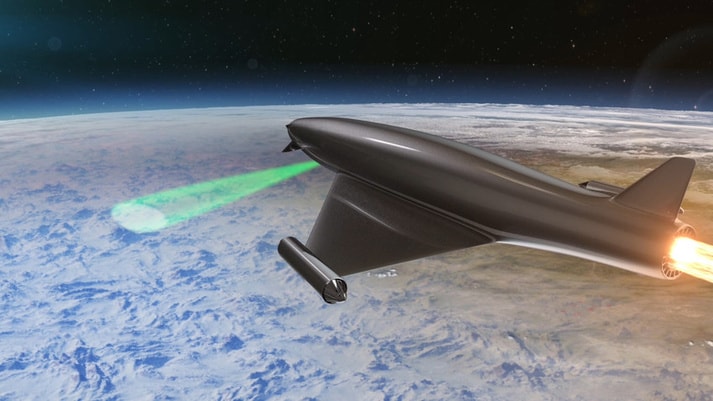
Developed by engineers at BAE’s military aircraft facility in Warton, and evaluated by experts at the Rutherford Appleton Laboratory, the so-called Laser Developed Atmospheric Lens (LDAL) concept, works by simulating naturally occurring phenomena and temporarily creating lens-like structures in the Earth's atmosphere which can be used to magnify or change the path of electromagnetic waves such as light and radio signals.
The concept copies two existing effects in nature; the reflective properties of the ionosphere and desert mirages, and simulates both of these effects by using a high pulsed power laser system and exploiting a physics phenomena called the ‘Kerr Effect’ to temporarily ionise or heat a small region of atmosphere in a structured way.
According to BAE: mirrors, glass lenses, and structures like Fresnel zone plates could all be replicated using the atmosphere, allowing the physics of refraction, reflection, and diffraction to be exploited.
The company claims that as well as enhancing a commanders’ ability to observe adversaries’ activities over much greater distances than existing sensors the concept could be used as a form of ‘deflector shield’ to protect friendly aircraft, ships, land vehicles and troops from incoming attacks by high power laser weapons.
As previously reported by The Engineer, directed energy weapons are now a major focus across the defence industry.
Commenting on the concept BAE futurologist Nick Colosimo said: “Working with some of the best scientific minds in the UK, we’re able to incorporate emerging and disruptive technologies and evolve the landscape of potential military technologies in ways that, five or ten years ago, many would never have dreamed possible.”




Red Bull makes hydrogen fuel cell play with AVL
Formula 1 is an anachronistic anomaly where its only cutting edge is in engine development. The rules prohibit any real innovation and there would be...